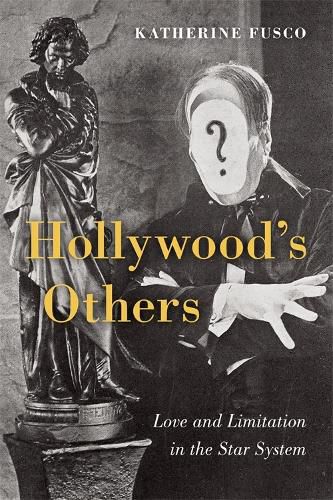Readings Newsletter
Become a Readings Member to make your shopping experience even easier.
Sign in or sign up for free!
You’re not far away from qualifying for FREE standard shipping within Australia
You’ve qualified for FREE standard shipping within Australia
The cart is loading…






We tend to think about movie stars as either glamorous or relatable. But in the 1920s and 1930s, when the Hollywood star system was taking shape, a number of unusual stars appeared on the silver screen, representing groups from which the American mainstream typically sought to avert its eyes. What did it mean for a white entertainment columnist to empathize with an ambiguously gendered Black child star? Or for boys to idolize Lon Chaney, famous for portraying characters with disabilities?
Hollywood's Others explores the affective ties between white, non-disabled audiences and the fascinatingly different stars with whom they identified-but only up to a point. Katherine Fusco argues that stardom in this era at once offered ways for viewers to connect across group boundaries while also policing the limits of empathy. Examining fan magazines alongside film performances, she traces the intense audience attachment to atypical celebrities and the ways the film industry sought to manage it. Fusco considers Shirley Temple's career in light of child labor laws and changing notions of childhood; shows how white viewers responded to Black music in depictions of the antebellum South; and analyzes the gender politics of conspiracy theories around celebrity suicides. Shedding light on marginalized stardoms and the anxieties they provoked, Hollywood's Others challenges common notions about film's capacity to build empathy.
$9.00 standard shipping within Australia
FREE standard shipping within Australia for orders over $100.00
Express & International shipping calculated at checkout
We tend to think about movie stars as either glamorous or relatable. But in the 1920s and 1930s, when the Hollywood star system was taking shape, a number of unusual stars appeared on the silver screen, representing groups from which the American mainstream typically sought to avert its eyes. What did it mean for a white entertainment columnist to empathize with an ambiguously gendered Black child star? Or for boys to idolize Lon Chaney, famous for portraying characters with disabilities?
Hollywood's Others explores the affective ties between white, non-disabled audiences and the fascinatingly different stars with whom they identified-but only up to a point. Katherine Fusco argues that stardom in this era at once offered ways for viewers to connect across group boundaries while also policing the limits of empathy. Examining fan magazines alongside film performances, she traces the intense audience attachment to atypical celebrities and the ways the film industry sought to manage it. Fusco considers Shirley Temple's career in light of child labor laws and changing notions of childhood; shows how white viewers responded to Black music in depictions of the antebellum South; and analyzes the gender politics of conspiracy theories around celebrity suicides. Shedding light on marginalized stardoms and the anxieties they provoked, Hollywood's Others challenges common notions about film's capacity to build empathy.